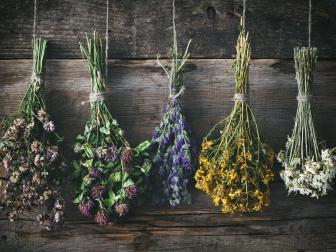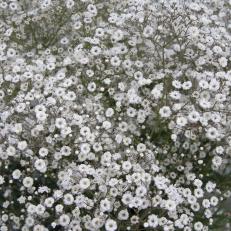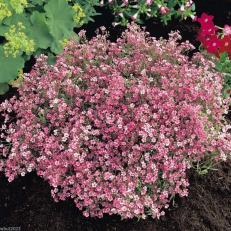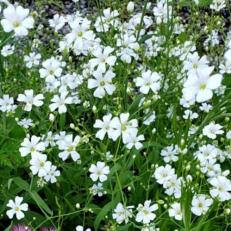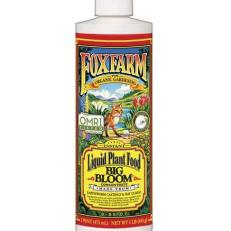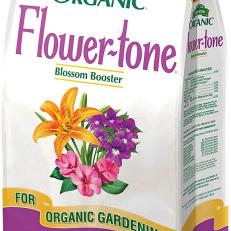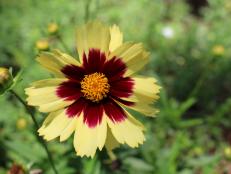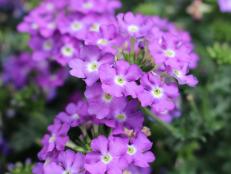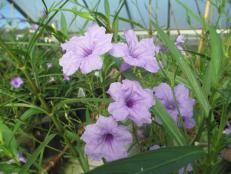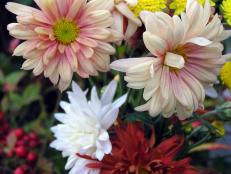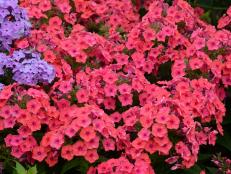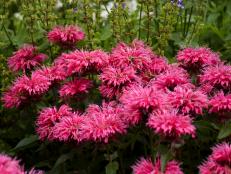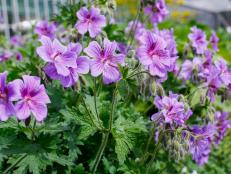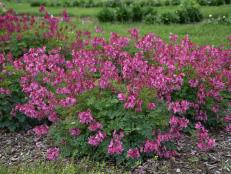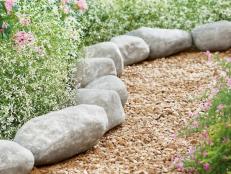How to Plant and Enjoy Baby's Breath
Learn to grow, tend and design with graceful Gypsophila in your garden and home
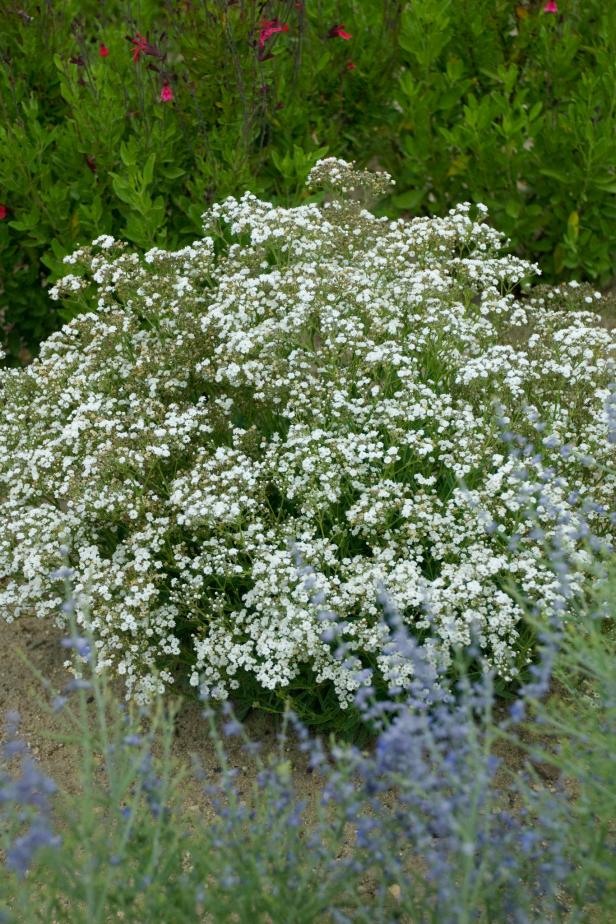
PerennialResource.com
Prized in floral arrangements, baby’s breath forms a flowery cloud in the garden. Count on baby’s breath as a filler in perennial gardens.

The whispering white blossoms of baby’s breath are a ubiquitous, cheap filler in grocery store bouquets, and (like any floral trend) they have fans as well as foes. Just the mention of baby’s breath makes many gardeners grimace as they envision heart-shaped balloons and gaudy bouquets wrapped in crackling cellophane. The global cut flower industry produces baby’s breath cheaply; thus, its aesthetic appeal has been cheapened over time. But this dainty bloom has its merits, and it can be lovely both in the context of a home garden and in thoughtful, contemporary floral design.
How to Preserve Flowers 5 Ways
Find out how to keep the beauty of your garden going all year long by learning the best way to preserve flowers.
Here, we explore the botanical aspects of baby’s breath, as well as useful tips for growing both its annual and perennial species successfully. Armed with this practical knowledge, gardeners may experiment with planting, harvesting, drying and arranging homegrown baby’s breath. Read on to find thoughts on modern floral design trends that reimagine baby’s breath in light of its natural beauty and spacious form.
Baby's Breath 101
When we forget what baby’s breath looks like in a carnation bouquet and consider its unique personality, we find an underrated botanical specimen of striking softness and cloudlike grace. Lovely in cottage garden and rock garden plantings, Gypsophila is a genus worth growing. In addition to producing a lovely fresh or dried flower, baby’s breath softens hard edges in the garden with its billowing, branching growth habit. In ideal conditions, Gypsophila offers several flushes of blooms from late spring to fall, attracting butterflies all the while.
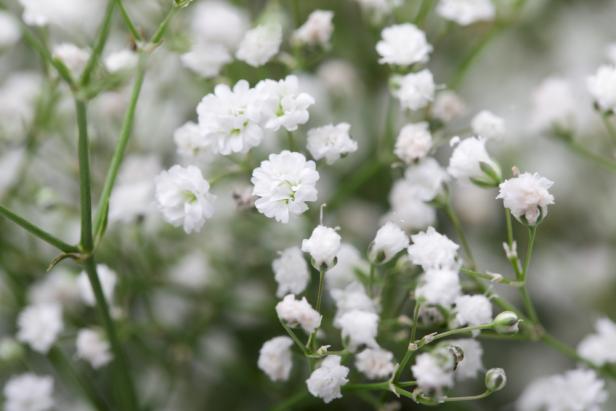
Shutterstock/sakhorn
Baby's breath is an underrated botanical specimen of striking softness and cloudlike grace.
Gypsophila plants are upright and bushy, from 6 inches to 3 feet tall, depending on the species. Leaves are lanceolate and subtle. Gardeners should treat annual baby’s breath as they do other hardy annuals — with spring-planting in cold climates and fall-planting in warm climates. Gypsophila relishes full sun but welcomes afternoon shade in hot summers. It requires excellent drainage and will tolerate sandy, salty locales and poor soil fertility.
Types of Baby's Breath
Seeds and plants are available for several annual and perennial species of Gypsophila. Many gardeners can successfully grow either type; note the differences in flower shape and hardiness when selecting your species. Annuals have more open flower faces on shorter stems and are hardy to a wider range of zones (2-10). Perennials include those with tiny pom-pom blooms on long stems and are hardy to a more narrow range of zones (3-7).
Perennial Gypsophila Species
If you hope to enjoy baby’s breath without having to replant every year (and you live in Zones 3-7), perennial Gypsophila is a great choice. The frilly, double-petaled baby’s breath found in flower shops is the most widely known perennial example. In addition to florist types, look for creeping varieties of perennial baby’s breath with either pink or white blooms. These two perennial cultivars are easily accessible for home growers:
- Early Snowball Baby’s Breath (Gypsophila paniculata 'Early Snowball') features double blooms on widely branching stems reaching 36 inches tall, perfect for cutting.
- Pink Creeping Baby’s Breath (Gypsophila repens 'Rosea') is hardy in Zones 4-7 and features a carpet of 4- to 8-inch tall stems — perfect for borders or spilling over retaining walls with blooms from June to October. Also available in white.
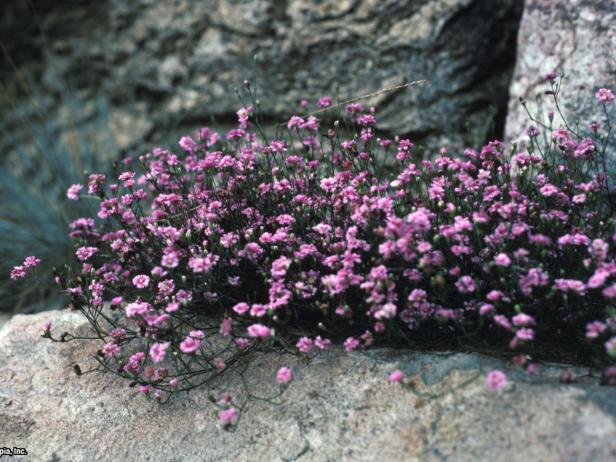
Creeping Baby's Breath
Annual Gypsophila Species
Depending on your space and routine, the flexibility of annual plantings may be preferable. If you have never grown Gypsophila before, annuals can give you a test drive with this genus. Additionally, annual baby’s breaths are hardy to a wider range than the perennials. These blooms have friendly, open faces and tend to have shorter stems. Still, they bring a similar sense of light and air to the flower shop classics.
Since baby’s breath is a hardy annual, plant during the cool season alongside other early, direct-sown favorites like bells of Ireland, nigella and Iceland poppy. You may even find baby’s breath included in annual wildflower seed mixes. The following annual Gypsophila make stellar selections:
- Covent Garden Baby’s Breath (Gypsophila elegans 'Covent Garden') features dainty white, open-faced flowers in a cloud-like formation — bouquet-friendly stems from an annual variety.
- Gypsy White Improved Baby's Breath (Gypsophila muralis 'Gypsy White Improved') produces tight mounds of foliage and semi-double blooms in white, with a hint of lavender, compact enough for container planting.
How to Plant Baby's Breath
Generally, baby’s breath does not appreciate having its roots disturbed, so gardeners may find the greatest success with direct sowing as opposed to starting indoors and transplanting. That being said, sowing inside to get a head start on the season is an option when done carefully.
Direct Seeding Baby’s Breath
Gypsophila is relatively reliable when grown from seed, but the seedlings prefer cool temperatures. Gardeners in cold zones should direct seed in spring when a light frost is still possible. For southern gardeners, direct seeding in fall provides the necessary cold period; plant with other hardy annuals like larkspur and agrostemma. Baby’s breath seeds are tiny and should be surface-sown or just barely covered. Providing a floating row cover can help keep surface-sown seeds intact and the soil evenly moist.
Starting Baby’s Breath Seeds Indoors
While not the most beginner-friendly seed to germinate, many gardeners enjoy starting baby’s breath — it just takes a little patience. Sow annual baby’s breath inside 6-8 weeks before the last frost. Perennials should be started 8-10 weeks before transplanting (which can be done in either early spring or early fall).
Gypsophila should germinate reliably at 70-75 degrees in two-to-four weeks, with seeds surface-sown in a tray, as light is required for germination. A dusting of fine vermiculite helps seeds stay moist without blocking light. Place the tray on a heat mat with a humidity dome, ensuring light is present to coax the seeds from dormancy.
Once seeds germinate, remove the tray from the dome and heat mat and place it under grow lights. Ideally, Gypsophila seedlings should be kept in 50-55 degree conditions; a basement or garage should work nicely. While seedlings may grow in a warmer space, flowering will be lackluster compared to those grown in cool conditions, according to Allan M. Armitage and Judy M. Laushman’s helpful text, "Specialty Cut Flowers."
Preparing the Garden and Transplanting Gypsophila
Select a site for baby’s breath that receives full sun (although afternoon shade is welcome in hot summer zones). Ideal soils are exceptionally well-draining with neutral to alkaline pH, according to NC State Cooperative Extension. Rich fertility isn’t necessary. Overly wet, hot or acidic conditions are inhospitable to Gypsophila.
The addition of organic matter helps ensure ample drainage. While gently loosening and building the soil with compost or leaf mold (and sand if your soil has high clay content), incorporate a slow release, organic fertilizer.
Since baby’s breath branches enthusiastically, space plants 2 feet apart to give them plenty of room (unless your variety is compact). The breathing room created by the misty stems holds unique appeal and close spacing diminishes their natural effervescence. Handle roots carefully when transplanting and water gingerly to help them get settled.
Buy Baby's Breath Seeds Online
How to Care for Baby's Breath
Watering and Fertilizing Gypsophila
Gypsophila thrives with regular but not frequent watering, requiring well-drained soil to avoid rot. Allow the soil to dry between waterings. Established plants are moderately drought tolerant.
Using an organic, slow-release fertilizer helps encourage a vigorous, lengthy flower display. Over-fertilizing is problematic for delicate Gypsophila, according to Eileen Powell’s "The Gardener’s A-Z Guide to Growing Flowers from Seed to Bloom." Applying a lower dose than what the package recommends may help. Try Fox Farm’s liquid "Big Bloom" plant food or Espoma’s granular "Flower Tone."
Buy Supplies
Mulching
Mulch is a universally helpful tool for suppressing weeds, building soil health and retaining moisture. With a healthy 1- to 2-inch layer of straw, bark or leaf mulch around baby’s breath, watering and weeding tasks are less frequent.
Baby’s Breath Pests and Disease
Burpee lists several pests and diseases that may present challenges to Gypsophila. Diseases to avoid spreading include alternaria leaf spot, aster yellows, botrytis, root rots and sclertonia crown rot. Common pests include aphids, leafhopper, Japanese beetles, rabbits and slugs.
When dealing with pests and disease, take an Integrated Pest Management (IPM) approach, which emphasizes proactively supporting a healthy garden. When issues do arise, IPM turns first to mechanical and biological interventions. When these methods fall short, OMRI-approved products like Safer Soap may be applied.
Deadheading and Pruning Baby’s Breath
Gypsophila plants require pruning a few times for peak performance. First, give seedlings a pinch to just above a lower leaf node once they reach 6 to 12 inches tall. This early pinch will help ensure that branching begins low to the ground, giving the plant more stability and leading to more flowers. After the first flush of flowers, prune back spent stems to encourage a second show. For those with hot summers, additional flushes may not be possible, but cooler climates may even enjoy a third flush before the frost. Finally, in autumn, cut perennial Gypsophila back — almost to ground level — for overwintering.
Garden Design With Baby's Breath
The cloudlike effect of baby’s breath in bloom makes it a graceful addition to many planting schemes. It softens hard lines, adds interest to all-white gardens, lends lightness to xeriscapes and fills a helpful bloom-time gap as spring flowers fade and summer flowers emerge. With both upright and creeping forms, Gypsophila is adaptable to many designs.
Powell recommends combining annual baby’s breath with honeywort, leucanthemum or phlox. The perennials, she notes, perform beautifully alongside dianthus, echinacea, heuchera and stokesia.
If the misty white look of baby’s breath appeals to you but isn’t quite right for your space, consider other snowy species like 'White Cloud' calamintha, 'Diamond Frost' euphorbia, white sweet alyssum or 'Bridal Wreath' spirea.
Flower Arranging With Baby's Breath
Harvesting Homegrown Baby’s Breath
Baby’s breath should be harvested when two-thirds of the buds are open but the bottom blooms haven’t yet browned, according to Lynn Byczynski’s book, "The Flower Farmer." Cut stems low on the plant to ensure long length for arranging. If you wish to dry baby’s breath, place cut stems upright in a bucket containing 1 inch of water. As the water evaporates, the flowers will dry while holding their shape.
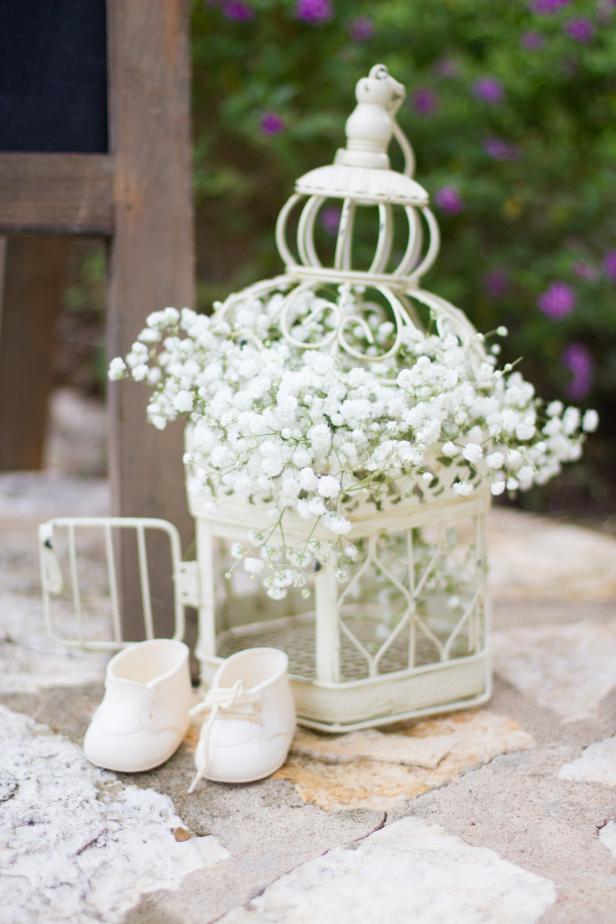
Kendall Peters
Add a “found at a French marketplace” vibe with a vintage birdcage filled with baby’s breath and a pair of antique babydoll shoes.
Modern and Natural Floral Design with Baby’s Breath
While it’s common to find tight, symmetrical bouquets featuring Gypsophila, contemporary designers driven by a natural aesthetic are finding fresh, modern takes on the unfussy beauty of baby’s breath.
The wispy white blooms are enjoying a trendy moment in wedding design, as many couples seek soft floral backdrops and cloud-like installations for their parties. Single-ingredient floral bouquets are also popular at the moment; a bouquet made entirely from baby’s breath has an ethereal look that many brides seek. With a skilled floral designer’s touch, baby’s breath transforms from a run-of-the-mill grocery store ingredient to an elegant building block for modern botanical artwork.

You can enjoy it this way at home, too — let baby’s breath shine in a shorter vessel where it can settle like mist as it would in the garden, rather than in a skinny upright cylinder where the flowers bunch together. The key to using baby’s breath is to let it breathe — allowing the airy, delicate beauty of its champagne-bubble blooms and gossamer stems to shine.






